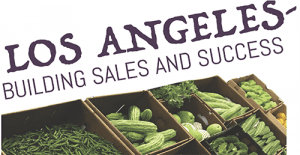If you want to get an insider’s view of the ports, ask the experts. Marcel Van Dijk, marketing manager for the Port of Los Angeles, provides us with a few details: “Between POLA and the Port of Long Beach there are 12 container terminals. Most importers and exporters do business with both ports.”

Dr. Noel Hacegaba, chief commercial officer of POLB, says “When it comes to containerized cargo, most produce importers use both, because ships are in specific alliances. They decide how to divide between the terminals.”
The top produce import by volume coming through POLB is citrus at 6,078 20-foot equivalent units. Other top imports include bananas, melons, papayas, dates, figs, pineapples, avocados, onions, garlic, and leeks.
“Based on TEUs,” says Hacegaba, “Chile is the top country for produce imports into our port followed by China, Honduras, Guatemala, and New Zealand.”
For the POLA, Van Dijk reports that Guatemala, Costa Rica, Chile, the Philippines, and Thailand are the top exporters of produce into the United States.
Customs broker J & K Fresh, LLC, located in El Segundo, handles documentation for the U.S. Department of Agriculture on behalf of clients for all imported produce. The company’s clients import primarily from Central and South America, Australia, and New Zealand.
Lynnette Keffer, president of J & K Fresh, describes the top volume imports her company handles as bananas and pineapple. “Bananas and pineapples year-round from Central and South America, as well as bananas from Nicaragua and Ecuador. We also handle a lot of pineapple from Costa Rica.
“We’re also seeing increased volume of blueberries and avocados,” Keffer notes, “probably due to their respective boards really promoting their health benefits. Depending on the time of year, avocados come from Peru, Chile, and lately Colombia. Imported blueberries come in from Peru, Chile, and Argentina.”
This is an excerpt from the most recent Produce Blueprints quarterly journal. Click here to read the full article.


